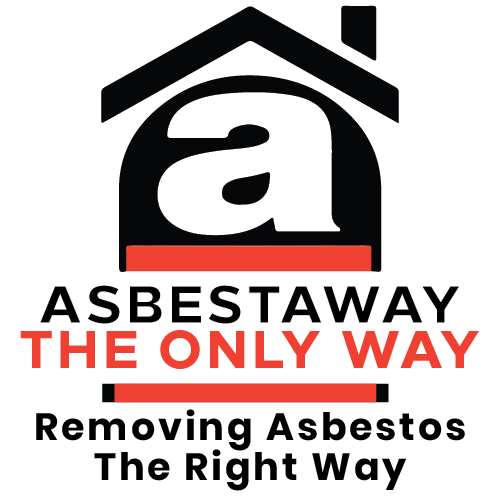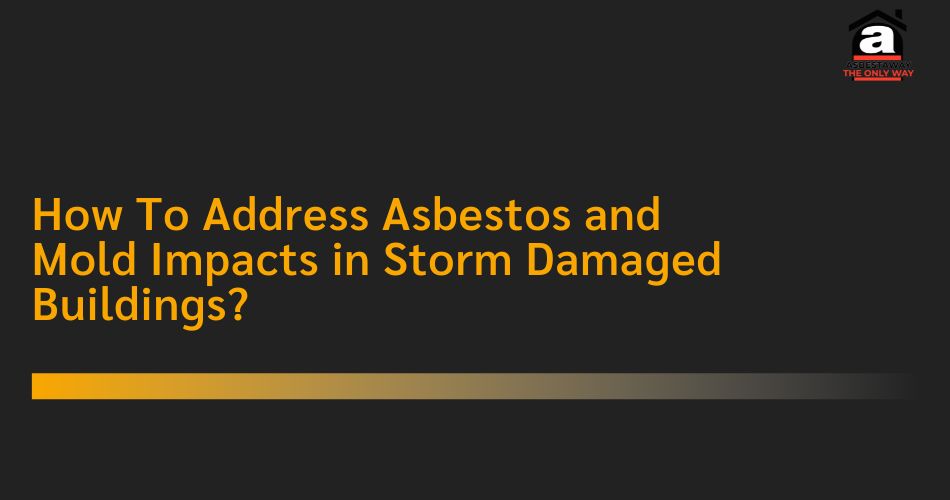When a storm hits, it can cause significant damage to buildings. One of the big concerns after such damage is dealing with asbestos and mold. Both of these issues can pose serious health risks if not properly addressed. Asbestos is a material that was commonly used in older buildings for insulation and fireproofing. It’s safe when it’s intact, but if it’s disturbed like during a storm, it can release tiny fibers that are dangerous to breathe in. Mold, on the other hand, thrives in damp conditions. After a storm, if water seeps into a building, it can create the perfect environment for mold to grow, which can lead to respiratory problems and other health issues. In this blog, we’ll look at why it’s important to address asbestos and mold issues promptly and how you can go about doing it safely. The goal is to help you understand the risks and the necessary steps to ensure that your building is not only repaired but also safe for everyone who will be using it.
Understanding Asbestos and Mold Risks
Asbestos and mold are two important concerns when it comes to maintaining a safe home. When asbestos-containing materials are damaged or disturbed, they can release tiny fibers into the air. Breathing in these fibers can lead to serious health issues, including lung diseases and cancer, so it’s important to handle asbestos carefully and often best left to professionals. On the other hand, mold is a fungus that thrives in damp, humid environments. It often appears as fuzzy patches in various colors and can be found in places like bathrooms and basements with water leaks. Mold can trigger allergic reactions and respiratory problems, particularly for those with asthma or sensitivities. To prevent mold growth, it’s important to fix leaks, manage humidity levels, and clean up any mold promptly. For large mold infestations, professional help might be necessary.
Initial Inspection After a Storm
After a storm, your top priority should be ensuring safety as you assess any damage to your building. Here’s a simple guide to help you with the initial inspection:
- Safety First
Before you start checking for damage, make sure the area is safe. Look out for hazards like exposed electrical wires, unstable structures, or sharp debris. It’s a good idea to wear protective gear such as gloves, a mask, and sturdy shoes. If the damage seems severe or if there are risks, you’re unsure about, consider getting professional help to avoid any accidents.
- Identifying Potential Asbestos-Containing Materials (ACMs)
Older buildings might contain asbestos in materials like insulation, floor tiles, or roofing. After a storm, check for any visible damage to these materials. If you suspect that damaged materials might contain asbestos, avoid touching or disturbing them. It’s important to have a certified professional inspect and handle any potential asbestos issues safely.
- Spotting Mold Growth
Storms can lead to water leaks and increased humidity, which are perfect conditions for Mold to grow. Look for signs of Mold, such as dark spots or fuzzy patches on walls, ceilings, or floors. Pay extra attention to areas that might have been exposed to water, like around leaks or wet spots. If you find Mold, clean it up carefully or get a professional to handle large infestations. Addressing Mold quickly helps prevent further health risks and damage.
Steps to Mitigate Asbestos Hazards
When dealing with storm-damaged buildings, it’s important to handle asbestos safely. Here’s a simple guide to help you manage asbestos risks effectively:
- Immediate Precautions
If you suspect there’s asbestos in the damaged building, don’t touch or disturb it. Asbestos fibres can be very harmful if they become airborne. Keep the area off-limits to everyone except trained professionals. It’s important to avoid any unnecessary movement or contact with the potentially contaminated materials.
- Engaging Licensed Asbestos Professionals
Asbestos removal and handling should be left to the experts. Hire a licensed asbestos professional who has the training and equipment to safely remove or manage asbestos. They can perform a thorough inspection, properly remove the asbestos, and ensure that the area is safe for re-entry.
- Legal and Regulatory Compliance
There are strict rules and regulations governing asbestos management. Make sure to follow local and federal guidelines to avoid legal issues. Your licensed asbestos professional will help ensure that all necessary paperwork and safety procedures are correctly handled. This includes proper disposal of asbestos materials and notifying relevant authorities if required.
Addressing Mold In Storm-Damaged Buildings
Mold thrives in damp, dark environments, so addressing it swiftly is key. If the mold problem is extensive, enlist professional help to ensure thorough cleanup and prevent recurrence. By acting promptly and following these steps, you can effectively manage and minimize the impact of mold in storm-damaged buildings.
- Immediate Actions
As soon as you notice water damage from the storm, act fast. Start by removing any standing water and drying out the affected areas as quickly as possible. Mold loves damp, dark places, so the sooner you dry things out, the better. Make sure to wear protective gear, like gloves and masks, to avoid inhaling Mold spores.
- Professional Mold Remediation
If the Mold problem is serious or widespread, it’s best to call in the pros. Professional Mold remediators have the tools and expertise to safely remove Mold and ensure it doesn’t come back. They’ll clean up the Mold and may also treat surfaces to prevent future growth.
- Preventative Measures
After dealing with the immediate Mold issue, take steps to prevent it from happening again. This means fixing any leaks, improving ventilation, and keeping an eye on areas prone to moisture. Regular inspections can help catch any potential problems before they get out of hand.
The Importance of Post-Remediation Testing
When you’ve cleaned up asbestos and Mold from a storm-damaged building, you might think the job is done. But there’s one more important step: post-remediation testing. Here’s why it’s so important and what steps we need to follow:
- Asbestos Clearance Testing
Even after removing asbestos, tiny particles can still linger. Asbestos clearance testing checks the air and surfaces to make sure all the hazardous material has been completely removed. This ensures that the area is safe for people to be in and that the risk of asbestos exposure is gone.
- Mold Testing and Air Quality Assessment
Mold can be tricky; it often hides in places you can’t see. Mold testing helps find any remaining spores or colonies. Additionally, an air quality assessment ensures that the air in the building is clean and free from Mold particles that could cause health issues. This step is important to make sure that your space is not only visually clean but also safe to breathe in.
Why Consider Asbestaway For Asbestos Testing & Removal Services?
When it comes to managing both asbestos and mold, safety and expertise are crucial, and that’s where Asbestaway excels. Specializing in asbestos and mold management, Asbestaway boasts years of experience in safely testing and removing these hazardous materials from buildings. Our team is highly trained in handling both asbestos and mold, ensuring that the job is done correctly and safely. All professionals at Asbestaway are licensed and certified, adhering to strict safety standards and regulations to protect you and your property. We offer a comprehensive range of services, from initial testing of asbestos to complete removal and disposal of both asbestos and mold, ensuring that every area is thoroughly cleaned and free from residual contaminants. Our customer-focused approach guarantees top-notch service with minimal disruption to your daily life, keeping you informed and at ease throughout the entire process.
Conclusion
Addressing asbestos and Mold in storm-damaged buildings is important for ensuring the safety and health of everyone in the space. Asbestos, when disturbed, can pose serious health risks, and Mold thrives in damp conditions, leading to respiratory problems and other issues. It’s important to act quickly and follow proper procedures to handle these concerns effectively. By conducting a thorough inspection, taking immediate action to address any issues, and enlisting professional help when needed, you can manage these risks effectively. Asbestaway offers specialized services to handle asbestos safely and efficiently, ensuring compliance with regulations and providing peace of mind. Remember, a clean and safe environment is essential for the well-being of all who use the building.

